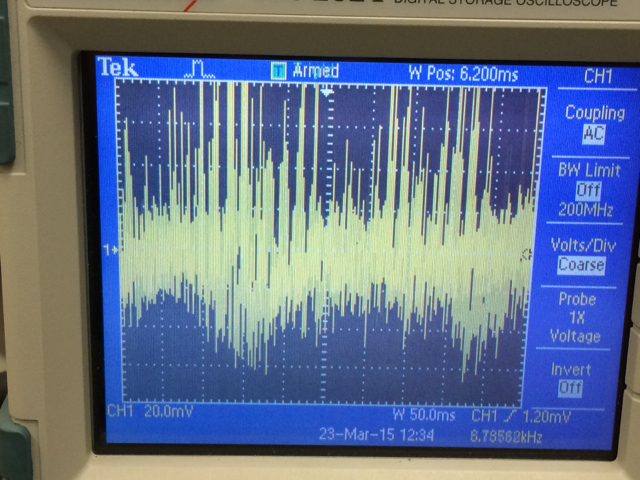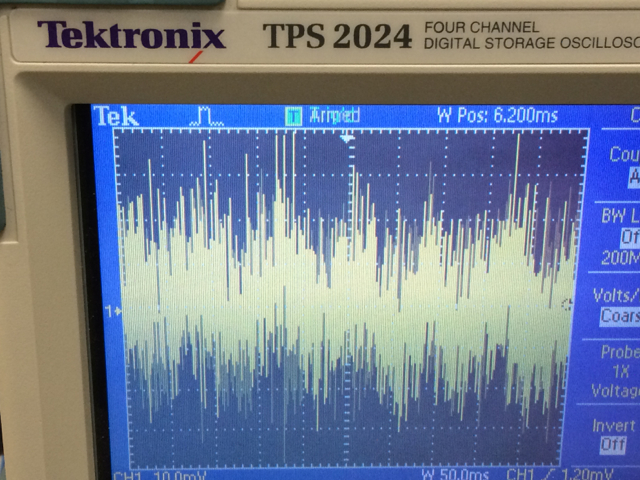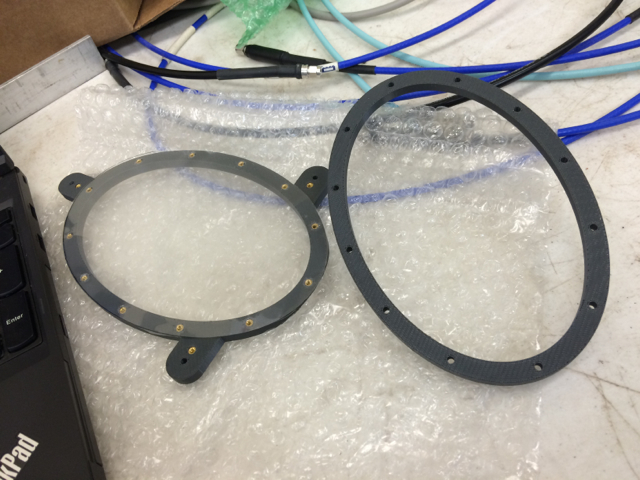You are not logged in. Log in
|
|
|
Mylar beam splitterFrom $1Table of contentsNo headersBeginning status: At the outset we noticed that the total power output of the LMT Rx was too noisy to point up on bright quasars. There were also some microphonic effects. Here is the total power output when the system is stable (no disturbances such as stomping around):
When stomping near the Rx, the total power becomes very variable:
And it takes a while (minutes) for the variability to die away and there is a resonance that one can see:
This ringing is around 10Hz. Work on the mylar Beam Splitter: We first looked at the spare mylar window and experimented with tightening it using a heat gun. The housing looks like:
We tightened all the screws, used a heat gun on the mylar (sweeping across about 6 inches from membrane) and when it cooled the mylar was "drum tight". Emboldened, we took out the mylar window housing that was in the receiver:
We performed the same procedure, making sure the mylar was taut and when tapped with a finger made a drum sound. Note that the window is secured by spring tensioned screws that hold the window (red) against the black flange only at three points. These are set by the three set screws that are next to the spring screws. On the assumption that they had been pre-set we left them alone, but it is important to note that the red window housing does not get stability from pressing against the black flange all around the window circumference. After the window was re-installed, the sensitivity to microphonics was reduced but, most interestingly, audible tones (with the plexiglass top removed) did excite resonance in the mylar.
Tags: (Edit tags)
|
Powered by MindTouch Core |










